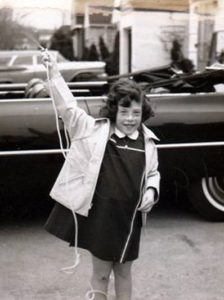A clear grasp of "voice" in writing has always eluded me. Not that I don't have one. Everyone does. But I've never been able to define mine, and certainly can't control it.
I still remember, with embarrassment, having my writing satirized by my newsroom colleagues during a roast celebrating the 1988 Pulitzer Prize in feature writing. And somewhere in a box in the garage is my collection of rejection letters. One of them is from an editor at the Washington Post Style section, back in the early 1990s. He had liked meeting me and admired my work, he said. But he found my writing voice "earnest and Midwestern" – and thus not a good fit for the sassy, cheeky and edgy tone of Style.
Once I started teaching journalism, students asked again and again about voice. Many had come up through elementary and high school being told what wonderful writers they were. Then they got to j-school and much of what had been celebrated was stripped away as their writing was regrounded in fact, clarity, precision and attribution. Mostly I tried to assure young writers of three things:
- Voice isn't the same as opinion, and should never be self-indulgent
- They needed to master the fundamentals of journalism (reporting, verification, accuracy, transparency) before they could take nonfiction writing to unlimited creative heights
- Their unique writing "voice" wasn't lost; it would find its way forward again once they had mastered those fundamentals
I had no idea if that was useful advice. And because I believe in the philosophy of Richard Bach – "We teach best what we most need to learn." – I set out on an occasional and highly non-methodical study of "voice." I was reminded of that quest by a post this week in Storyboard from contributor Esther Landhuis, who captured – in her own spare and intelligent voice – a conversation from the recent National Association of Science Writers conference. Landhuis' piece sent me scouring my shelves of writing books, where I found the wonderful short essay from book author and New Yorker staff writer Susan Orlean. (My copy of her newest, "The Library Book," is on its way.)
The quote headlining this post opens a short piece "On Voice," published in "Telling True Stories," the anthology of presentations and keynotes from several years of the Nieman Narrative Conference. After her straightforward set-up, Orlean goes on to say:
Young children often create fabulous paintings, only to be told after they start school that real houses don't look that way. At that point, most people lose their ability to be visually creative. Truly great painting retains some element of a child's emotional authenticity. Great writing does, too.

Orlean highlights aspects of writing that I think of as mechanics, or craft, but that she articulates as aspects of creativity and voice: Pacing, word choice, channeling the language or speaking rhythms of your story subjects, reading your writing out loud so you can hear how it sounds to the inner ear – and if it sounds authentic to you. "You can't invent a voice," she writes. She admits to getting "crafty" and leaning on gimmicks. And she discusses the inevitable passage writers go through in which they try to emulate the voice or style of writers they admire.
I remember going through that passage myself, for what felt like long, frustrating years. But as I began to respect the process, and to trust that my voice was my voice – whatever it was and whether or not I could define it – I embraced what I learned from immersing myself in others. As an editor, I try to get inside a writer's voice and channel it as I massage copy. As a teacher, I encourage emulation: It's like young art students who sit at galleries and copy the masters; in the process, they are practicing and internalizing craft techniques – how Monet used light, how Van Gogh used brush strokes. Masterful writer, teacher and coach Chip Scanlan even used to teach a session at The Poynter Institute he called "modeling:" He'd ask writers to bring in a page or two of writing from one of their favorite authors; then he'd have them retype it, sometimes multiple times. Again, he was urging them to absorb the techniques of those writers through their fingers and into own skill set. (Caution: All this needs to stop far short of plagiarism or anything that passes off someone else's work as yours. It is a path to learning, not to publication.)
Which takes us back to Orlean. Her essay in "Telling True Stories" is not even two pages long. I highly recommend you read the whole thing. Find the book at a library or bookstore, or better, buy yourself one; it'll cost you less than two lattes. But for now, to tie this up, Orlean does that smart writer thing and ends with a wrap-back to her opening, only now with the wisdom and voice she has built throughout her piece:
As I matured as a writer and gained more confidence, I began losing what I had mistakenly understood to be my style. I returned to something simpler. One watershed moment was the realization that my writing voice had circled back to something natural, intuitive, and instinctive.



